In the 1880’s shearers wielded a lot of influence on our country. Despite us not yet being a single united nation, in the various states where wool growing was the major industry militant unionism arose with great co-operation between the various state organisations.
In those days, shearers and general farm workers were numerous. Wool was the biggest export commodity of most of the states but the working conditions of those who produced this golden fleece were poor. Are we any richer today?
In 1886, the leader of the Miners Union, William Spence and a 24 year old shearer, David Temple, established The Australasian Shearers Union (ASU) in Ballarat and set up headquarters in Creswick. In 1887 they set up branches in Bourke and Wagga Wagga. In the same year, the Queensland Shearers
Union (QSU) was established at Blackall.

1891 Shearers Strike
The ASU then formed another union called the General Labourers Union (GLU) to cover all other farm workers and shed hands. At its annual conference a resolution was passed to reject the form of “Freedom” contract prepared by the Pastoralists organisations and the strike escalated.
The strike failed when the ASU conceded freedom of contract and the union could not continue supporting striking workers and the anti-union Queensland government sent in the military.
In 1892 the Queensland Unionists laid down a manifesto and formed the Queensland Labour Party under a large white gum tree in Barcaldine, now known as The Tree of Knowledge and where a monument erected to mark the occasion still stands today. This event is regarded as the formation and foundation of The Australian Labour Party.

In 1894 the ASU amalgamated with the GLU to form the Australian Workers Union (AWU) and the biggest strike in the state’s history, the Queensland Pastoral strike commences soon afterwards. This strike surpassed that of 1891. The combined weight of the amalgamated and affiliated unions were a greater force to be reckoned with. Groups of striking shearers roamed the countryside in armed conflict with police and pastoralists. Many stations were torched and property destroyed culminating with the burning of the woolshed at Dagworth Station near Winton with the incineration of 140 lambs. This incident gave rise to our most famous and best known unofficial anthem, Waltzing Matilda.
Dagworth Station was owned by the McPherson brothers, one of which, Bob, was a good friend of Banjo Paterson. Banjo came to visit his friend at Dagworth after the woolshed had been torched and learned of the catastrophe. The facts were that a striking itinerant German insurrectionist named Samuel “Frenchy” Hoffmeister started the fire. Hoffmeister lived in a camp at Kynuna Station on the south side of the Diamantina River. He was chased by the McPherson brothers and three police, constables Cafferty (#420), Daly (#89) and Dyer (176) but they failed to capture him. He committed suicide by shooting himself, apparently in a fit of remorse for the burning of the lambs in the fire that he started at the Dagworth woolshed His grave was discovered, and a cairn built at the Combo Waterhole, a billabong formed by the Diamantina River.
Back at Dagworth Station homestead, Banjo was intrigued by the story and started composing his lines to the accompaniment of Christina McPherson. Banjo was engaged at the time to another girl. The association he developed with Christina lead to the engagement being broken off. Christina was playing a tune on an autoharp which she had heard while attending the annual steeplechase at Warrnambool the previous April. The tune was a Scottish air named Craigilee. Banjo deviated from the precise facts to create his epic piece. Hoffmeister was not caught with a “Jumbuck in his tucker bag” nor did he “jump into the billabong”. He was running away and got away. There was no policeman #123. The facts as stated above are provided by Dr. Ross Fitzgerald, Associate Professor of History at Griffith University.
Regardless of the deviation of facts as told by Bob McPherson who was, after all, one of the pursuers, Banjo was telling a story based on the incident and what a wonderful stirring legacy he left and a powerful political allegory based on the 1894 shearers strike.
Dagworth Station today is no longer owned by the McPherson family and it is no longer a sheep station. It is now a cattle station but I have no doubt that the ghosts may still be heard if you pass by that billabong on any dark and windy night. I have been passed it in daylight so if you really want to hear the ghosts then get in your 4 x 4 Toyota Landcruiser and take a very long trip. You won’t regret the effort.

Returning to the reality of life in 1894, economic depression and drought brings a big drop in membership of the AWU. Numbers fell from 17,000 to 7,000, many local branches were closed and the head office was moved to Sydney. In 1901 an AWU member, Chris Watson, was elected to Federal Parliament and became leader of the Labour Party. Membership rose to 14,000 Aerger with the AWUQ increased this further to 30,000 and the AWU became the biggest and wealthiest union in Australia.
A pastoral strike in NSW inflamed tensions between the AWU and the newly formed Machine Shearers Union (MSU) but following the passing of the Federal Pastoral Industry Award by the Federal Conciliation and Arbitration Act of 1904 the MSU collapsed. Chris Watson became Prime Minister of the first national Labour government anywhere in the world. This is soon followed in 1910 when Andrew Fisher, with AWU support, becomes Australia’s Prime Minister heading the first majority national Labour government anywhere in the world.
In 1912, another shearer, Ted Grayndler, becomes general secretary of the AWU. Grayndler holds this role for 29 years and the federal seat of Grayndler, once held by Gough Whitlam, is named after him. Then followed a succession of amalgamations with other unions to create the AWU as far the biggest union by any measure with a membership of 86,000 and also the biggest union in the world.
Increasing size brought increasing internal tensions and at the 1931 election Labour lost office and remained in the wilderness until 1941 when the Curtin government was elected. Curtin died in office and his place was taken by Ben Chifley who lost office to Bob Menzies Liberal Party which remained in office for nearly 30 years. During this time the AWU and the Labour movement were in constant turmoil. Strikes all around the country were a regular occurrence, the influence of shearers and pastoral workers was diluted by the increased membership through amalgamations until 1956 when another national shearer's strike occurred resulting in another victory for pastoral workers with a large increase in wages.

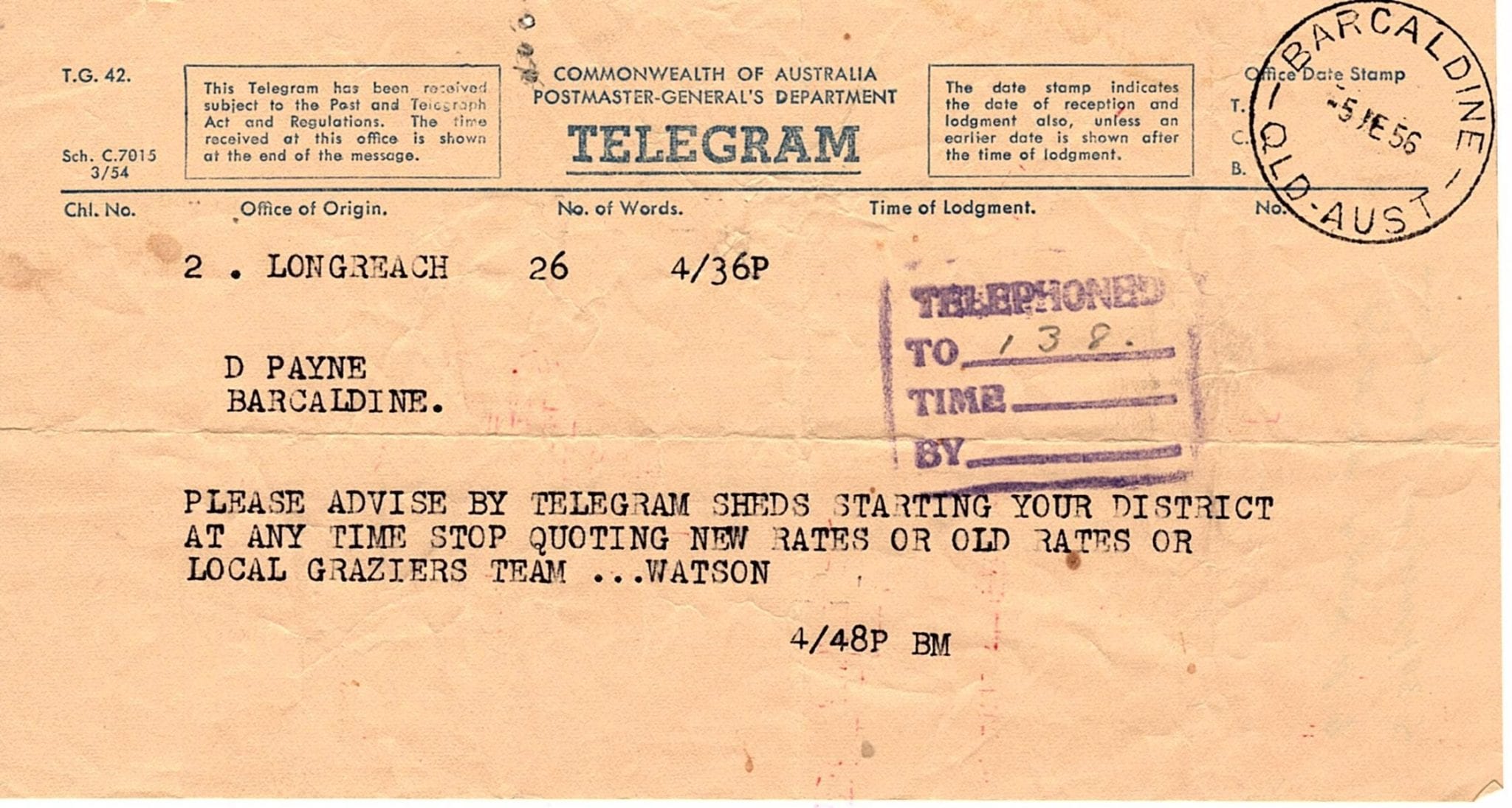
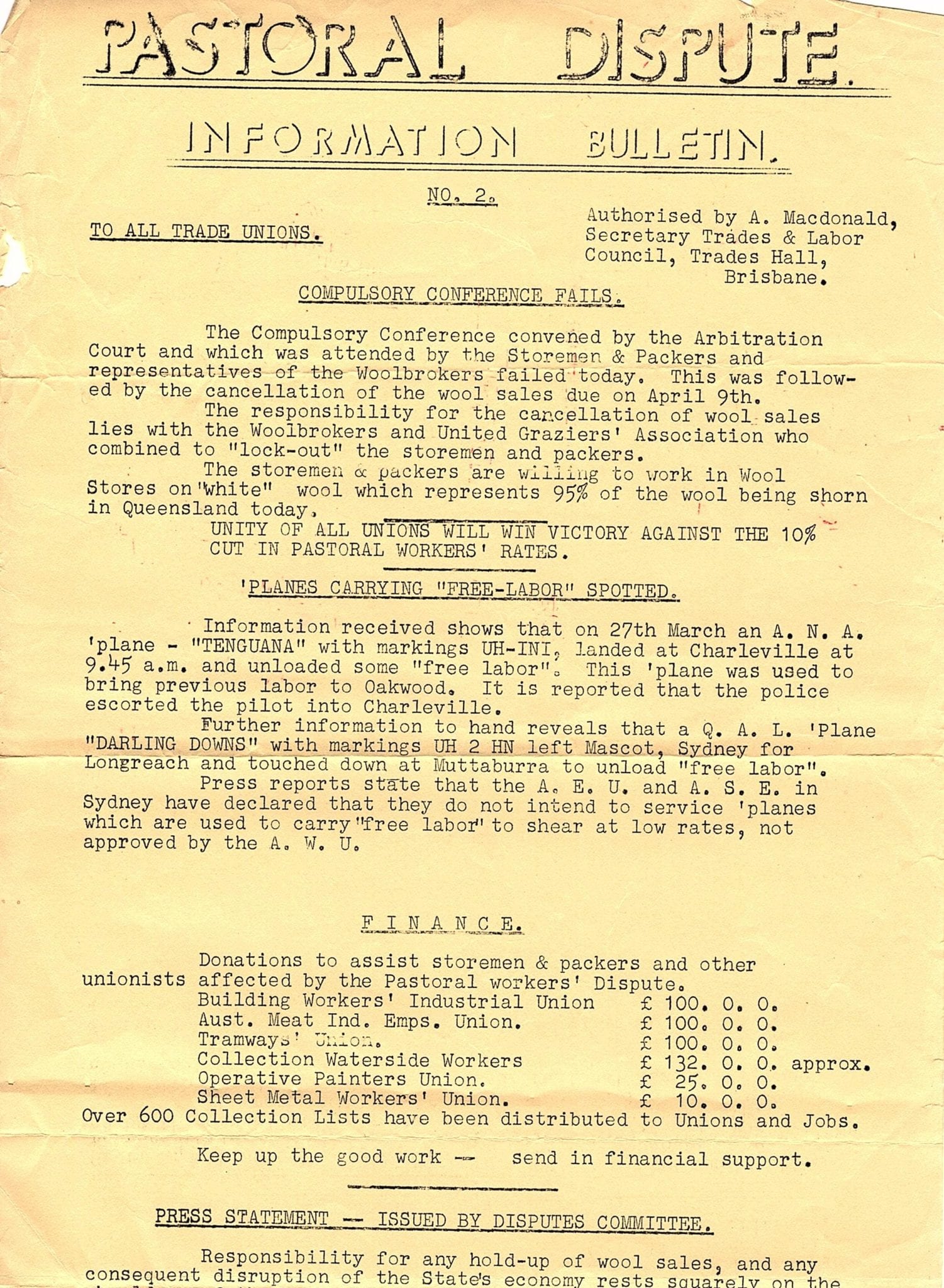
In modern times the AWU has become somewhat of a pariah in the union movement being at odds frequently with other unions and the ACTU and tending to follow its own path when it suited but always recognising solidarity within the general Labour movement. With the vast membership now drawn from non-pastoral industries and a general reduction of employees within those industries, the influence of shearers has virtually disappeared but it should not be forgotten that, for better or worse, Australian shearers were the very foundation of the trade union movement throughout the world as we know it today.
Never forget, also, that had it not been for the shearers we would never have had WALTZING MATILDA.
We came from the sheep's back and we may live and die on coal or iron ore. But no matter what, it came from the back of the hard-working Aussie bloke who came from the shearing sheds, the bush and the heart of Australia.
But I can tell you this. It never came from a cafe in Melbourne and it never came from a Chinese windmill, a Chinese solar panel or a breathless Chinese virus.
It came from the heart and soul of hard working people who had shear sense, commonsense and a love of their place they called home.
Moving on, during our Australia Day family lunch Waltzing Matilda came up among the collection of background music and prompted quite a discussion, especially from my two grandson’s girlfriends.
My brood have been raised on a diet of Australiana history and anecdotes so the questions have come mainly from the girlfriends who are both city raised born and bred Australian girls.
It occurred to me that their questions might also be questions in the minds of many other city bred youth and would be a good topic for Possum Nana’s sessions with her information hungry group of youngsters. The context of it is something that we older ones take for granted but I suspect that many are not aware that the story behind the song is a true story recorded first hand by its author, Banjo Patterson.
For starters the main questions raised were “What is a Coolabah tree?” “What is a billabong” and what is a “swagman?” Here are some answers.
A coolabah tree is a species of gum tree which occurs naturally in the warmer parts of inland Australia on flood prone country that is not inundated often enough to support river red gums.

The Historic Coolabah Tree is situated past the causeway on the right as you head to the Hughenden Showgrounds. It is of immense historical importance as it is linked to two relief expeditions searching for the Burke and Wills Expedition. Both expeditions blazed the tree on the banks of what is now Station Creek.
In 1861 Fredrick Walker led a team from Rockhampton to the Gulf searching in vain for the missing explorers. The following year Landsborough's search party passed through from the Gulf. These relief expeditions led people to become aware of the fertility and wealth of the plains adjacent to the Flinders River.
Truly this tree should be preserved as a memorial to the brave explorers of this land. Two plaques have been erected near the tree as a tribute to them.
A billabong is a water hole that was formerly a bend in a river but cut off when the course of the river changes. Its water is replenished by floods.

A billabong can form when a river changes its course, cutting off a section and leaving behind a large body of water, similar to a lake. It usually only occurs after rain floods the river and nearby region. Eventually, the river water breaks through the base of the loop, and an extra water section is formed. Billabongs can also form from pools of water accruing after a large flood.
Rainwater continues to restore the billabong from rain and nearby rivers. The area stays fresh and supports a copiousness amount of wildlife.
A swagman is an itinerant labourer, usually very poor, who travels on foot from farm to farm looking for casual work or a handout. He carries a bed-roll which also contains most of his worldly possessions and when rolled up is carried across his back. The bed-roll is called a swag, hence swag man. In America he would be called tramp. It is very rare to see a swagman today as our social security system provides them with sustenance.

In the 19th century when swagmen were common features of rural Australia, there was a large surplus of men. Resulting from this and the itinerant nature of their lifestyles, swagmen never got married and a nick-name was given to the swag. It was called Matilda after an imaginary woman that the swagman would never meet. To expand the mirage when a swagman went walking on his track this was called waltzing Matilda pretending that he was dancing with the wife he would never have.
The story behind the song, as written by Banjo is basically true but slightly embellished for artistic purposes.
It begins in the days of the great shearers’ strike of 1891 to 1894 when mobs of striking shearers set fire to shearing sheds on the big sheep stations in NSW and Queensland which employed non-union shearers.
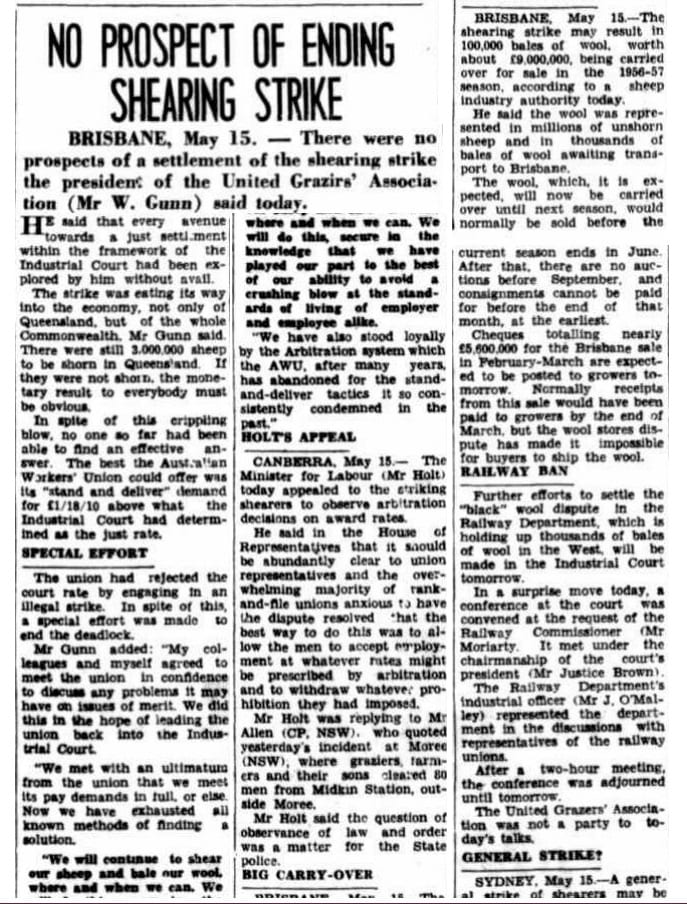
The scene is at a property called Dagworth Station, a large sheep property near Winton in Queensland. The property was the scene of an armed battle in September, 1894 between 16 striking shearers and the station owners, the McPherson family. The woolshed was burnt to the ground and 140 lambs were burned to death.
When the police arrived the body of one of the attackers was discovered among the debris. It was the body of Samuel “French” Hoffmeister, the “jolly swagman” who was supposed to have committed suicide in the billabong. The billabong has been identified as the Combo waterhole at Kynuna Station near Winton. His grave, marked with a stone cairn, is located near the billabong on the south side of the Diamantina River. The three policemen involved were Snr. Constables Austin Cafferty (420), Michael Daly (89) and Const. Robert Dyer (175). The numbers are their police badge numbers.
Hoffmeister’s dead body was found with a gunshot wound near the billabong where the shearers were camped. It has not been confirmed whether the gunshot wound was inflicted during the battle or was self-inflicted as suicide following a bout of remorse for what he had done.The story of his suicide by drowning in the waterhole is a myth. Let’s call it poetic licence.
Banjo Paterson was a friend of Bob McPherson, one of the owners of Dagworth Station. In January, 1895, 14 weeks after the incident, Banjo was invited to stay at the station as a guest together with hisfiancé of 8 years, Sarah Riley. There he met Bob’s 21 year old sister, Christina.
Banjo and Christina developed an attraction for each other as they worked together on the creation of the famous song “Waltzing Matilda”. Sarah was from a respectable pioneer family from Western Victoria and in April, 1894 Christine was visiting the Riley family to attend the annual steeplechase at the Warrnambool races. Christina was taken by the Scottish tune Craigilee which she heard being played by the band at the races.
When Bob told Banjo of the story of the burning of the Dagworth woolshed he started to put together poem about it and Christina was developing the tune to suit it on her zither, there being no piano at Dagworth.
Banjo began flirting with Christina and amidst a hotbed of passion and jealousy was exposed as a cad and told to pack his bags and return to Brisbane. The two women involved were very upset and the engagement between Banjo and Sarah was broken off. Neither woman ever married.
In the second part of Banjo’s complete works Song of the Pen, published in 1983, at page 500 there is a transcript of an interview Banjo gave on the ABC Radio Talk programme in 1930. In it he describes his stay at Dagworth Station and the transcript is recorded as follows:-
“The shearers staged a strike by way of expressing themselves and McPherson’s woolshed at Dagworth was burnt down and a man picked up dead”.
Banjo goes further on to say:-
“And here a personal reminiscence may be worth recording. While resting for lunch, Miss McPherson played a little Scottish tune on a zither. I put words to the tune and called it Waltzing Matilda”.
Today Dagworth Station no longer carries any sheep. It was purchased by the North Australian Pastoral Company in 1995. Its 28,000 sheep have been replaced by cattle and 130 years of wool growing has passed into history preserved by Banjo’s famous poem and song.
Combo waterhole is about 150 kms North West of Winton. I have been passed there in daylight and did not hear any ghosts. Had I been there at night things may have been different.
The only logical explanation for this is that he was killed in the gunfight at the woolshed. The shearers then collected his body and returned it with them to their camp at Combo waterhole for burial. The station owners and police were following the shearers and caught up with them before they had time to bury the body. The explanation that he committed suicide in a fit of remorse is only a supposition, never a reported fact. I doubt if any shearer would have any pang of remorse over the incineration of 140 lambs. Further, the police presence would be explained either by way of them being part of the chasing posse, or, having been called to investigate the presence of a dead body with a gunshot wound.
My belief is that the police were part of the pursuing party and either instigated or condoned the burial on site due to its remoteness.

Yet, here we are today: in the midst of the most terrible time in our history, even worse than Whitlam or WW2, our country is crying out for a Moses to emerge and lead us out of the wilderness. I rate our present plight as worse than WW2 because at least in that era we were all pulling together for the sake of Australia.
This cannot be said today. Leading up to Federation we had such a man. Someone whose name is probably unfamiliar.
Yet, it was people like him who created the Australia that we knew and loved. A country that gave us pride and showed us that a strong back and a good work ethic could start a revolution.
Some of you might have heard of a man named Jack Howe. He was a shearer whose legacy surrounds us today in all manner of strenuous physical undertakings. It is the navy blue singlet invented by and known as The Jackie Howe singlet which is seen on building sites, farms and at any manly outdoor undertaking or on the bodies of lesser men who want to look like real men.
Jackie Howe was the Blade Shearing Champion of Australia, the Colonies and the World. He set the record at “Alice Downs” station near Blackall on 10th October, 1892. At that time the standard working week for shearers was 44 ½ hours and in that time he put up a tally, with blades, 1,437 sheep for the preceding week.
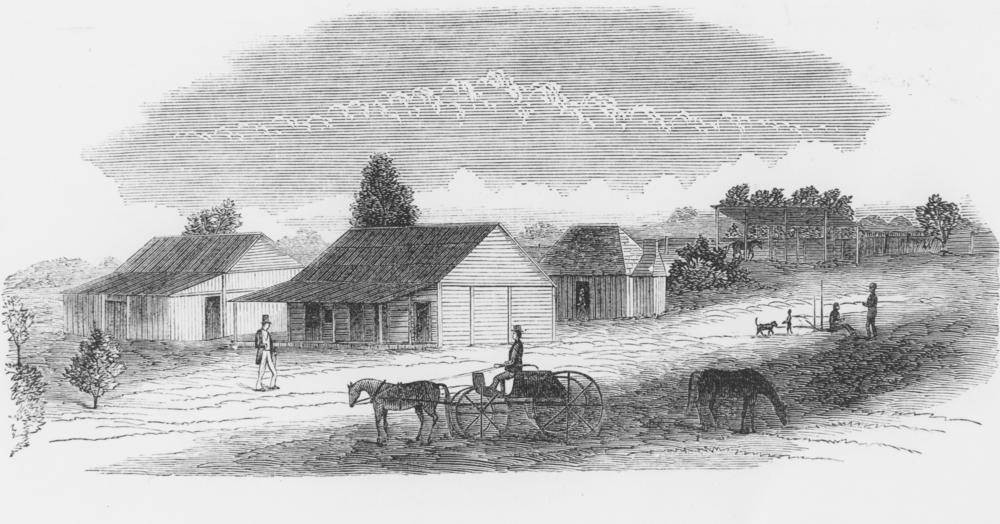
Alice Downs Station Barcoo 1878

Barry and Jenny Muir with the Jackie Howe memorial in Blackall (Jenny is Jack's granddaughter). ( - ABC Local)
I have put this video in because it shows the area of Blackall and does have a look at the Jackie Howe statue. Makes me want to become a grey nomad!
On the Saturday half day he tallied 144 sheep and the talk around the sheds, pubs and bars was that by doubling that for a full day you got to 288 sheep, only 12 short of the magic 300. Shearing 300 sheep in a day was the equivalent then of the 4 minute mile or a 10 second 100 metres.
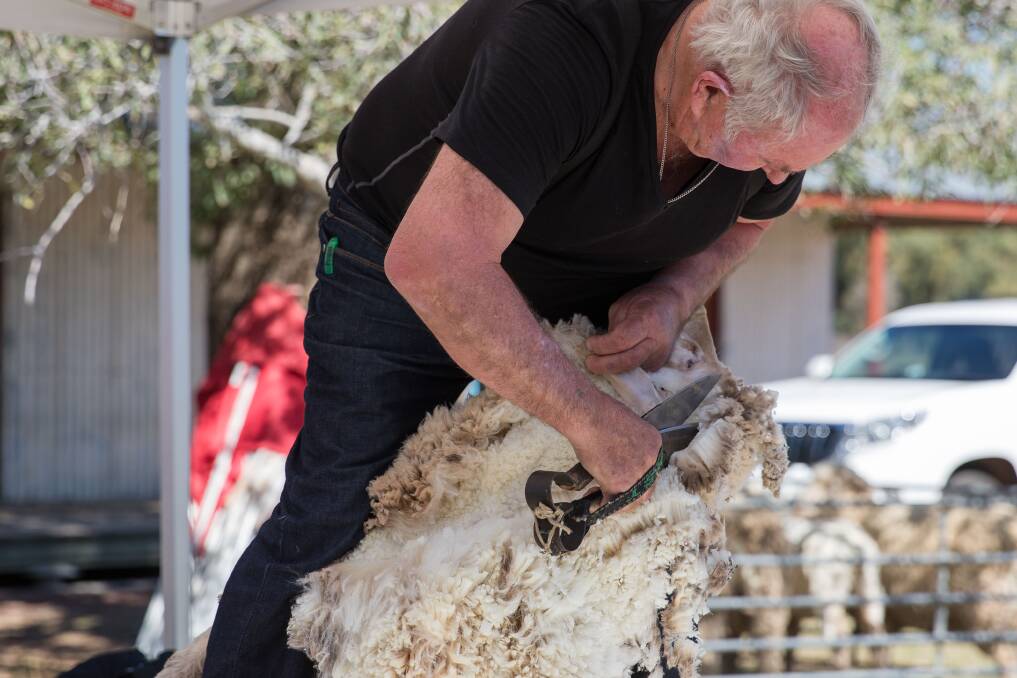
Click go the shears: New Zealand blade shearing legend, Peter Casserley, showing his skill at the Blackall Woolscour. Picture: Lisa Alexander Photography.
One sceptic stated that Jack would never achieve the magical 300 sheep per day. “Alice Downs” was a very big property. It was nominally 10,000 square miles and was carrying 213,222 sheep. 26,751 were sold off leaving 186,471 for the shearers. The shed had 47 stands and the shearing was entering its 11th week. There were two weeks of shearing left and the consensus was that the shearers would be so exhausted that nobody could physically achieve the magic 300.

Men shearing sheep - Outback Queensland
Jack took up the challenge and the word was passed around so that many shearers and serious punters were putting their money on the outcome. In those days shearers had to abide by strict rules as to handling of the sheep and the quality of their cutting. If they failed their tallies were docked. One of the rules at the time was that the sheep had to be carried to the stand, not dragged like they are today. A substantial physical effort. There was a “boss of the board” who supervised what was going on and ensured that all rules were followed.
For those who have never been to a shearing shed
Jack started the day at the official start time and by mid-afternoon it was clear that he was going to break 300. A number of shearers and onlookers who stood to lose money on their bets tried to interfere with him to slow him down but to no avail. After 7 hours and 40 minutes Jack had shorn 321 sheep and the mob said “You have done enough” and they knocked off 20 minutes before the knock-off bell.
This record has never been broken and with blade shearing a thing of the past is unlikely to. Jack tried his hand at machine shearing later that same year at “Barcaldine Dons” where he shore 237 sheep in one working day. His blade record was not beaten by machines until 1950 when Ted Riech shore 326 sheep in 7 hours and 48 minutes at “Brinard” near Julia creek. This was beaten again when Kevin Sarre shore 327 sheep in 7 hours and 40 minutes at “Hopefield Estate”, Pyramid Hill, Victoria in 1957.
Shearing is a single man’s job. At the age of 39 Jack decided to give shearing away and bought the Universal Hotel at Blackall. He sold that in1902 and took on the Barcoo Hotel until 1907, repurchased the Universal Hotel and remained there until 1919.
Barcoo Hotel
Jack had been an officer of the Queensland Shearer’s Union from 1887 until 1892. When he took over the Universal Hotel he became acquainted with T.J.Ryan who later became Premier of Queensland. Jack took his role in the union seriously because, as a working shearer, he was aware of the poor conditions that shearers worked under. He did not condone the strike of 1891 stating that confrontation would achieve very little.
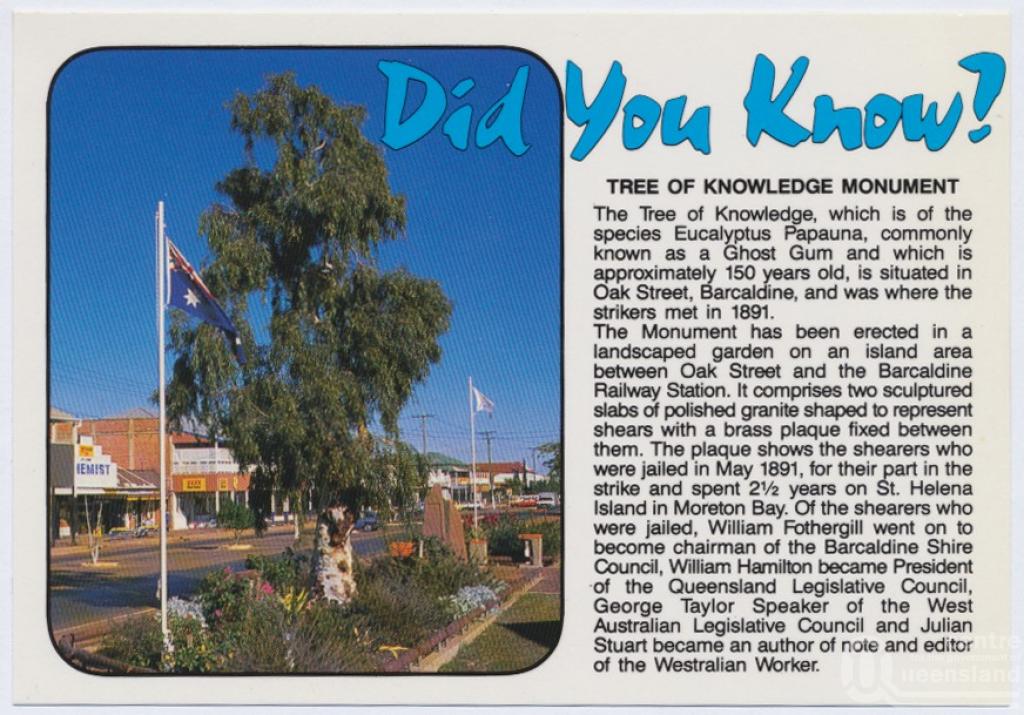
Another strike was called in 1894. Jack spoke strongly against it at a meeting at Blackall on the grounds that the graziers had started shearing early in anticipation of another strike and half the sheds had completed the season’s shearing. The vote to strike was carried 75 votes to 19. The strike failed for these reasons.
Jack supervised the amalgamation of several Queensland unions and became president of the Workers Political Organisation in Blackall. T. J. Ryan was a lawyer and a good friend of Jack. Ryan lost his political endorsement for the Queensland parliament as a result of a dispute between the Blackall and Barcoo branches of the Labour Party. Jack invited Ryan to stand as a candidate for preselection and with the WPO support, won the vote. At the time, Ryan was handling a case defending wrongful dismissal of two shearers at the court in Rockhampton and could not attend personally to his election campaign. Jack Howe undertook this task and due to his influence and popularity Ryan gained the seat for the Labour Party as the member for Barcoo. In 1915 Labour won the elections by a landslide and Ryan became premier.

TJ Ryan
Ryan took a strong stand against conscription in both referendums on the point. Ryan maintained that “The principle of Conscription is initself a species of slavery and it must never be allowed to take root in free Australia”
In 1919 Jack’s health started to fail. His naturally big frame became fat and stout. He retired to his property “Sumnervale” and died at Blackall Hospital on 21st July, 1920. His funeral was a very big affair and marked by an epitaph from T.J. Ryan “I have lost a true and trusted friend and Labour has lost a champion”.
Apart from his shearing record, the lasting memorial to Jack Howe is the Jackie Howe Singlet.

Shearers, and other workmen, of the day normally wore heavy flannel shirts with long sleeves rolled up to the elbow. These were a constant nuisance getting tangled in horns and hoofs. Flannel was used because the men believed that it absorbed the perspiration and saved them from getting chills.
Jack, through his dressmaker wife, Victoria, designed a short sleeved shearing singlet. Another manufacturer modified it again by removing the sleeves and using navy coloured cotton. They called it the Jackie Howe. The singlets did not come into use until after Jack’s death and his daughter took offence to the point of threatening legal action. She thought it was derogatory to his name. She was eventually persuaded not to issue legal proceedings.
It is therefore quite a conundrum that the figure after whom the singlet is named never wore it.
The video above is factually a little short on the truth but the sentiments expressed are worth celebrating.
BLOG COMMENTS POWERED BY DISQUS














































